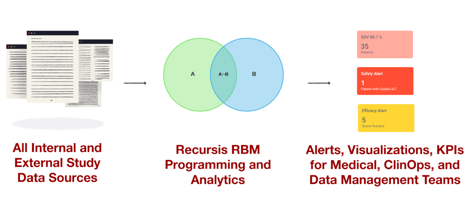In 2025, it's shocking how many clinical trials still rely on PDF-based enrollment documentation....
How AI is Enhancing Clinical Trial Patient Selection
Machine learning is fundamentally transforming how we approach patient selection in clinical trials. I'm witnessing capabilities that were theoretical just a few years ago become practical tools that dramatically improve trial outcomes.
Current AI Capabilities in Patient Selection
The technology has evolved to enable:
- Predictive models that forecast treatment response with remarkable accuracy
- Integration of complex biomarker profiles with clinical characteristics
- Substantial reduction in enrollment of likely non-responders
- Real-time optimization of cohort composition
A Real-World Success Story
Trials today are routinely analyzing profiles from over hundreds of potential candidates to identify patients with predicted high response probability.
The approach combines genomic data, clinical history, and biomarker profiles through machine learning algorithms trained on historical trial data. The result: trials can achieve primary endpoints ahead of schedule.
How AI Changes the Selection Process
Traditional patient selection relies on simple inclusion/exclusion criteria that often miss nuanced predictive factors. AI approaches can:
- Identify complex patterns in patient data that predict treatment response
- Integrate multiple data types (genomic, clinical, imaging) simultaneously
- Learn from outcomes to continuously improve selection accuracy
- Predict not just efficacy but also safety risks
Practical Implementation
Organizations implementing AI-driven selection typically start with:
- Historical data analysis to identify response predictors
- Pilot programs with defined patient populations
- Integration with existing clinical data systems
- Validation of AI predictions against actual outcomes
The Competitive Advantage
The shift isn't about finding more patients. It's about finding the right patients. Organizations that master AI-driven selection can:
- Reduce trial timelines through faster endpoint achievement
- Lower development costs by avoiding likely non-responders
- Improve regulatory success rates through clearer efficacy signals
- Accelerate time to market for effective therapies
Challenges and Considerations
AI implementation require:
- High-quality training data from previous trials
- Integration with clinical workflows
- Regulatory acceptance of AI-driven selection criteria
- Ongoing validation of algorithmic predictions
Looking Forward
The technology continues to evolve rapidly. Future capabilities will likely include real-time response prediction during treatment, dynamic cohort optimization, and integration with emerging biomarker technologies.
Organizations that begin implementing AI-driven patient selection now will have substantial advantages as these technologies mature. The question isn't whether AI will transform patient selection: it's whether your organization will lead or follow this transformation.


